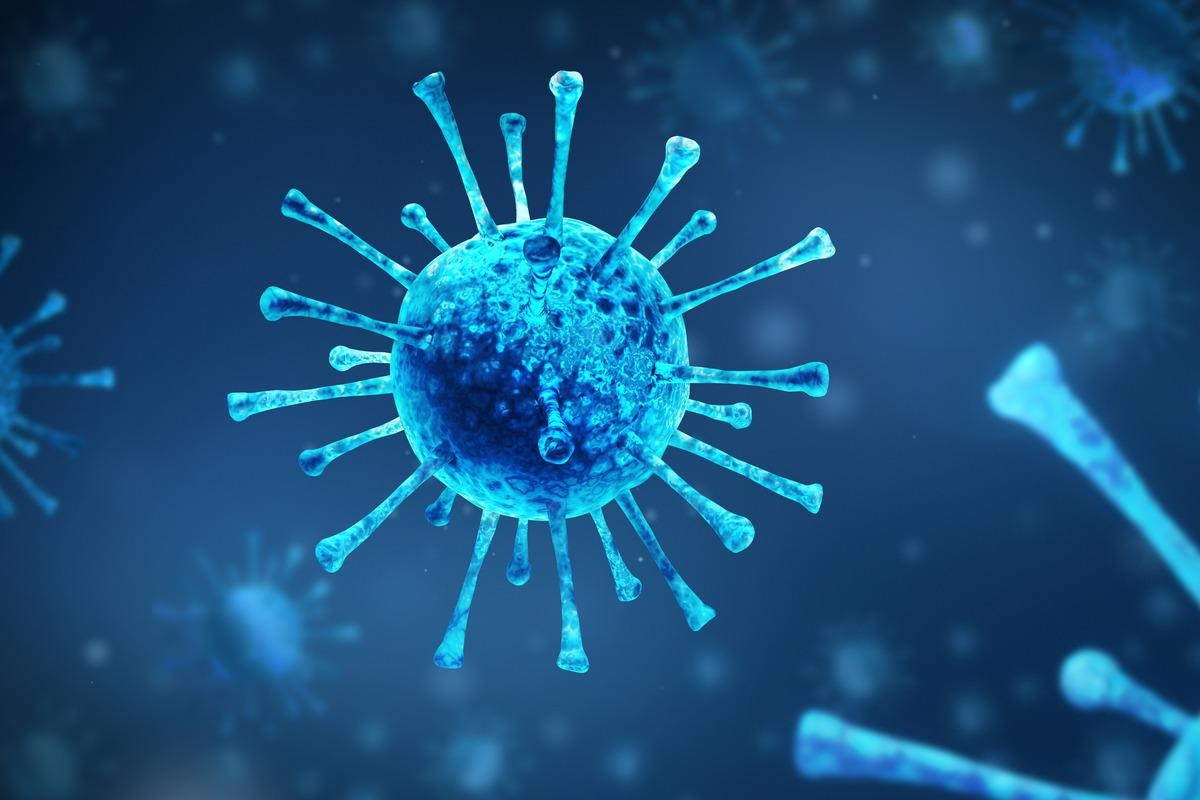Coronaviruses pose a major threat to the global healthcare systems and include zoonotic pathogens such as severe acute respiratory syndrome (SARS-1), severe acute respiratory syndrome coronavirus 2 (SARS-2) and Middle East respiratory syndrome coronavirus (MERS). Coronaviruses enter the host cells using the viral spike (S) protein with the fusion peptide (FP) of the S protein interacting with the lipid bilayers of the host.
 Study: Critical Negatively Charged Residues Are Important for the Activity of SARS-CoV-1 and SARS-CoV-2 Fusion Peptides. Image Credit: Starshaker/Shutterstock
Study: Critical Negatively Charged Residues Are Important for the Activity of SARS-CoV-1 and SARS-CoV-2 Fusion Peptides. Image Credit: Starshaker/Shutterstock
In a recent pre-print study published in the bioRxiv* server, researchers discovered the entry of coronaviruses is a Ca2+-dependent process. This study mainly focused on the SARS-1 FP-Ca2+ interaction and its effect on membranes using electron spin resonance (ESR).

 This news article was a review of a preliminary scientific report that had not undergone peer-review at the time of publication. Since its initial publication, the scientific report has now been peer reviewed and accepted for publication in a Scientific Journal. Links to the preliminary and peer-reviewed reports are available in the Sources section at the bottom of this article. View Sources
This news article was a review of a preliminary scientific report that had not undergone peer-review at the time of publication. Since its initial publication, the scientific report has now been peer reviewed and accepted for publication in a Scientific Journal. Links to the preliminary and peer-reviewed reports are available in the Sources section at the bottom of this article. View Sources
About the study
The authors performed a systematic mutation study on the negatively charged residues on the SARS-1 FP. Since there are six negatively charged residues on the FP, they investigated the residue involved in the Ca2+ binding. The topology model of Ca2+ binding was also identified in this study. In addition, the influence of Ca2+ binding on the FP-induced membrane ordering was determined.
They also investigated if the separate FP function the same way as the FP on the whole S protein on the viral membrane. The S proteins are available on the membrane in the form of trimers and each monomer consists of S1 and S2 subunits. The virus enters the host cell through receptor binding, followed by membrane fusion. The authors systematically introduced mutations on the residues and observed their effect on membrane structure as well as Ca2+ binding.
Additionally, a more advanced pseudotype viral particle (PP)-SUV system was used to examine the function of FP in the context of the whole protein, which better simulates the “biological scenario” and the results with those of separate peptides was compared. The two distinct cleavage sites (S1/S2 and S2’) of coronaviruses are activated by a much wider range of proteases. This resulted in the exposure of FP after the cleavage event at the S2’ site and it was identified through ESR that the bona fide FP is directly downstream of the S2’ site for all of SARS-1, SARS-2, and MERS. This provides coronaviruses unique flexibility to invade new cell types, tissues, and host species.
Furthermore, the authors found that the SARS-1 and SARS-2 FPs bind Ca2+ at a 1:2 (FP: Ca2+) ratio, the MERS FP binds Ca2+ at a 1:1 ratio which implied that the function of the CoV FPs is Ca2+ dependent. This finding increases the potential of repurposing FDA-approved drugs that block Ca2+ channels for COVID-19 treatment.
Results
The results showed that although all six negatively charged residues contributed to the membrane ordering activity of the FP to some extent, D812 was the most important residue. Both FP1 and FP2 bound one Ca2+ ion, and there were two binding sites in FP1 and three in FP2. The authors found that a similarly critical role was played by the corresponding residue D830 in the SARS-2 FP. The isothermal titration calorimetry (ITC) experiments depicted that the binding energies between the FP and Ca2+ as well as between the FP and membranes also decreased for all mutants.
Since the binding of Ca2+, the folding of FP, and the ordering activity correlated across the mutants, it can be suggested that the Ca2+ helped fold FP in membranes to increase its activity. With the help of novel pseudotyped virus particle (PP)-liposome methodology, the authors found that similar to separate FPs, the SARS-1 and SARS-2 PPs also induce membrane ordering, which declined due to the mutations of the negatively charged residues. The difference in kinetics between the PP and FP could be attributed to FP trimerization. Therefore, the study findings provided therapeutic solutions to control the ongoing coronavirus disease 2019 (COVID-19) pandemic by either targeting the FP-calcium interaction or blocking the Ca2+ channel.
Conclusion
In conclusion, the study data on the SARS-1 FP can also be applicable for SARS-2 FP since their sequences are similar. Although the SARS-2 and SARS-1 FPs vary only in three residues, the SARS-2 FP has a notably greater ordering effect.
Our results suggest that all negatively charged residues are involved in Ca2+ binding, though their contributions are different.”

 This news article was a review of a preliminary scientific report that had not undergone peer-review at the time of publication. Since its initial publication, the scientific report has now been peer reviewed and accepted for publication in a Scientific Journal. Links to the preliminary and peer-reviewed reports are available in the Sources section at the bottom of this article. View Sources
This news article was a review of a preliminary scientific report that had not undergone peer-review at the time of publication. Since its initial publication, the scientific report has now been peer reviewed and accepted for publication in a Scientific Journal. Links to the preliminary and peer-reviewed reports are available in the Sources section at the bottom of this article. View Sources